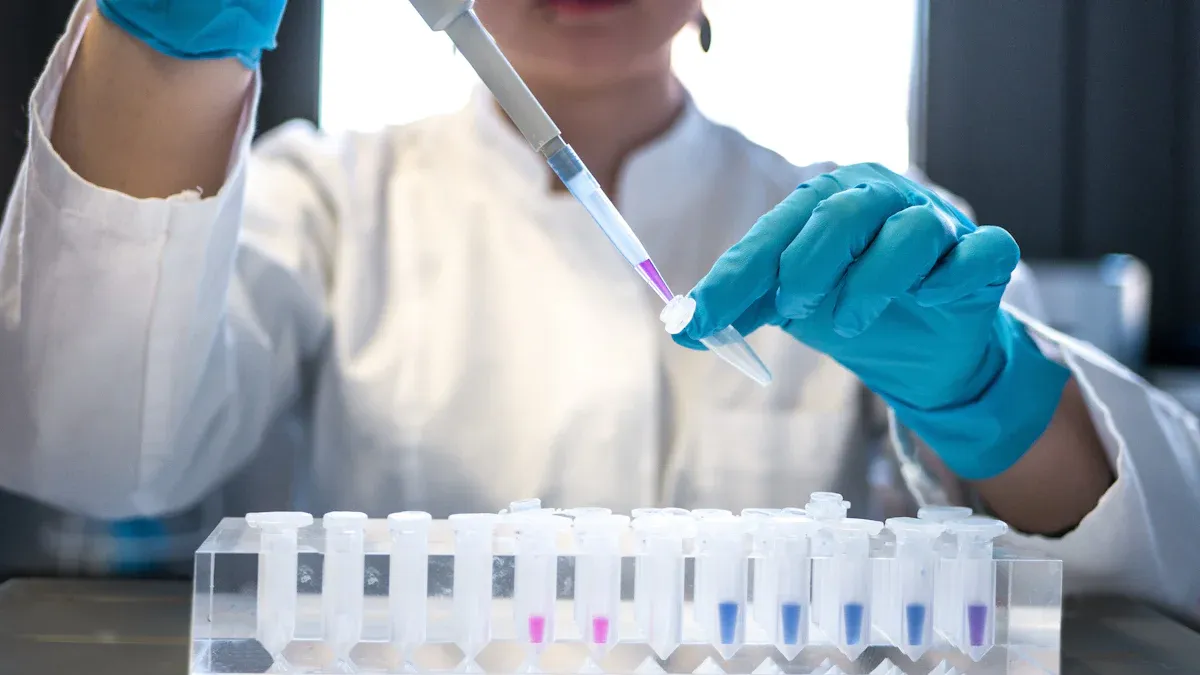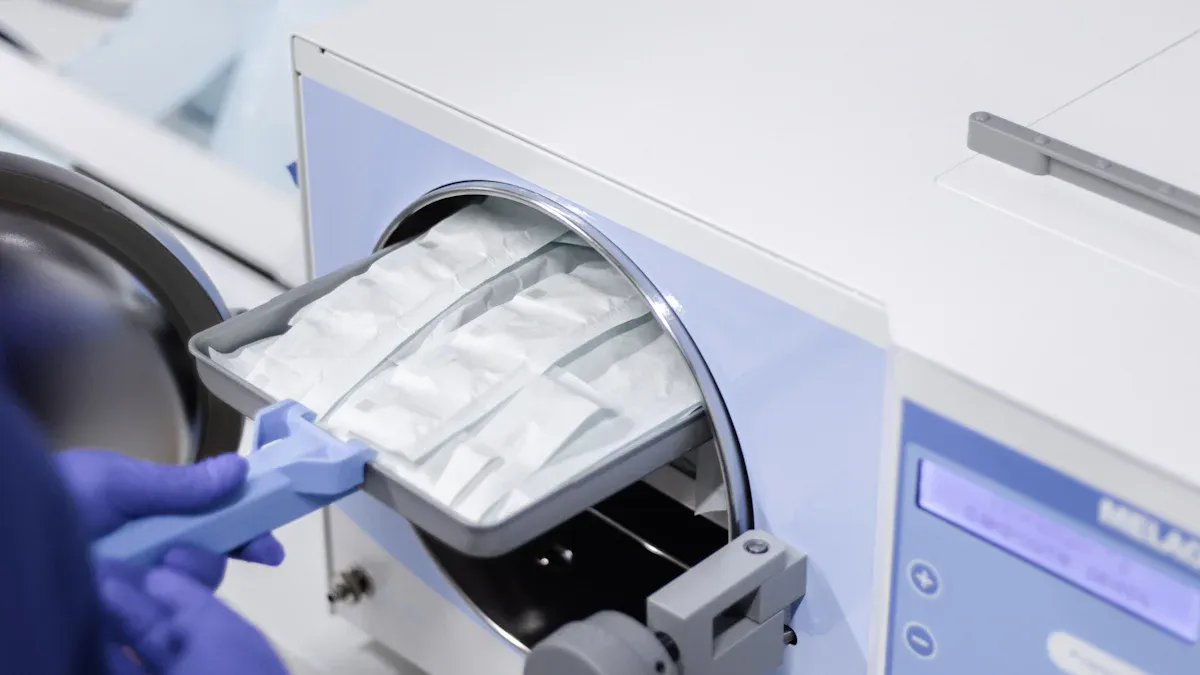
TAC Coating revolutionizes how you address sterilization and durability in medical devices. It resists corrosion, bacterial growth, and wear, ensuring safety and reliability. Its unique properties make it compatible with various sterilization methods, helping you maintain device integrity while meeting stringent healthcare standards. This innovation enhances performance and promotes better patient outcomes.
Key Takeaways
- TAC Coating makes medical devices stronger and last longer.
- It stops rust, damage, and bacteria from harming the devices.
- TAC Coating helps devices handle cleaning methods and stay safe to use.
- Using TAC Coating means tools last longer and cost less to replace.
- This helps doctors give better care to patients.
Understanding TAC Coating
Definition and Key Properties
TAC Coating is a specialized surface treatment designed to enhance the performance of medical devices. It forms a protective layer that resists corrosion, wear, and bacterial growth. This coating is lightweight yet durable, making it ideal for medical applications where precision and reliability are critical. Its biocompatibility ensures it works safely with human tissues, reducing the risk of adverse reactions.
One of its standout properties is its ability to maintain integrity under extreme conditions. Whether exposed to high temperatures or harsh chemicals, TAC Coating remains stable. This makes it a dependable choice for devices that undergo repeated sterilization. Additionally, its smooth surface minimizes friction, which helps prevent damage during use.
Functionality in Medical Applications
You’ll find TAC Coating playing a vital role in various medical applications. It protects surgical instruments from wear and tear, ensuring they remain sharp and effective over time. For implantable devices, the coating provides a barrier that prevents corrosion and supports long-term functionality inside the body. Its resistance to bacterial growth also reduces the risk of infections, which is crucial in healthcare settings.
In diagnostic and monitoring equipment, TAC Coating enhances durability and ensures consistent performance. Devices coated with this material can withstand frequent handling and cleaning without losing their effectiveness. By using TAC Coating, you can improve the safety and reliability of medical tools, ultimately benefiting patient care.
Addressing Sterilization Challenges with TAC Coating

Impact of Sterilization Methods on Medical Devices
Sterilization is essential for maintaining the safety of medical devices. However, many sterilization methods, such as autoclaving, chemical treatments, and radiation, can damage device surfaces. High temperatures may cause warping, while harsh chemicals can lead to corrosion. These effects compromise the functionality and lifespan of medical tools. You need a solution that can withstand these challenges without sacrificing performance.
Resistance to Corrosion and Bacterial Growth
TAC Coating offers exceptional resistance to corrosion, even when exposed to aggressive sterilization processes. Its protective layer prevents chemical reactions that degrade materials. This resistance ensures that devices maintain their structural integrity over time. Additionally, the coating inhibits bacterial growth by creating a surface that microbes cannot easily adhere to. This feature reduces the risk of infections, making it a safer choice for healthcare environments.
Tip: Using TAC Coating on your medical devices can help you meet strict hygiene standards while extending their usability.
Compatibility with Sterilization Processes
TAC Coating is compatible with a wide range of sterilization methods. Whether you use steam, ethylene oxide, or UV radiation, the coating remains stable and effective. Its durability under extreme conditions ensures that your devices retain their functionality after repeated sterilization cycles. This compatibility makes it a versatile choice for various medical applications.
Enhancing Durability with TAC Coating

Protection Against Wear and Tear
Medical devices often face constant use, which can lead to wear and tear. Over time, this can reduce their effectiveness and reliability. TAC Coating provides a robust solution by forming a protective layer on the surface of these devices. This layer minimizes friction and prevents scratches or abrasions during use. For example, surgical instruments coated with TAC Coating maintain their sharpness and precision even after repeated procedures. By reducing physical damage, you can ensure your tools perform consistently and last longer.
Resistance to Corrosion and Environmental Factors
Exposure to moisture, chemicals, and varying temperatures can cause medical devices to corrode or degrade. TAC Coating acts as a shield, protecting devices from these environmental factors. Its corrosion-resistant properties prevent chemical reactions that weaken materials. Whether in a humid operating room or during sterilization, the coating ensures your devices remain intact. This resistance not only preserves the structural integrity of the tools but also enhances their safety for patient use.
Prolonging the Lifespan of Medical Devices
Durability directly impacts the lifespan of medical devices. TAC Coating extends this lifespan by combining wear resistance and corrosion protection. Devices coated with this material require fewer replacements, saving costs and reducing waste. For implantable devices, the coating ensures long-term functionality inside the body, minimizing the need for additional surgeries. By choosing TAC Coating, you invest in tools that deliver reliable performance over time, benefiting both healthcare providers and patients.
Real-World Applications of TAC Coating
Surgical Instruments
TAC Coating plays a crucial role in improving the performance of surgical instruments. These tools often face repeated use and sterilization, which can lead to wear, corrosion, and dullness. By applying TAC Coating, you can protect the surface of instruments from damage. This coating ensures that tools like scalpels and forceps remain sharp and precise, even after multiple procedures. Additionally, the smooth surface created by the coating reduces friction, making instruments easier to handle during surgeries. This enhances both the efficiency of the procedure and patient safety.
Implantable Devices
For implantable devices, durability and biocompatibility are essential. TAC Coating provides a protective barrier that prevents corrosion and ensures long-term functionality inside the body. Devices such as pacemakers, stents, and orthopedic implants benefit greatly from this coating. It minimizes the risk of adverse reactions by creating a biocompatible surface that interacts safely with human tissues. The coating also resists bacterial growth, reducing the likelihood of infections. By using TAC Coating, you can ensure that implantable devices perform reliably over extended periods.
Diagnostic and Monitoring Equipment
Diagnostic and monitoring equipment must withstand frequent handling and cleaning. TAC Coating enhances the durability of these devices by protecting them from scratches, wear, and environmental factors. For example, coated sensors and probes maintain their accuracy and functionality even after repeated use. The coating also ensures that these tools remain hygienic, meeting strict healthcare standards. By incorporating TAC Coating, you can improve the reliability and lifespan of diagnostic equipment, ultimately supporting better patient care.
TAC Coating provides a groundbreaking solution for sterilization and durability challenges in medical devices. It enhances safety and reliability while improving performance. By extending the lifespan of tools, it reduces costs and supports better patient care. This innovation is essential for modern healthcare, ensuring devices meet the highest standards of quality.
FAQ
What makes TAC Coating different from other coatings?
TAC Coating combines durability, biocompatibility, and resistance to corrosion. It withstands sterilization processes and prevents bacterial growth, making it ideal for medical devices. 🛡️
Can TAC Coating be applied to all medical devices?
Yes, you can apply TAC Coating to surgical tools, implantable devices, and diagnostic equipment. Its versatility ensures compatibility with various materials and applications.
How does TAC Coating improve patient safety?
TAC Coating reduces bacterial growth and prevents device degradation. This ensures sterile, reliable tools for medical procedures, minimizing infection risks and enhancing patient outcomes. ✅


